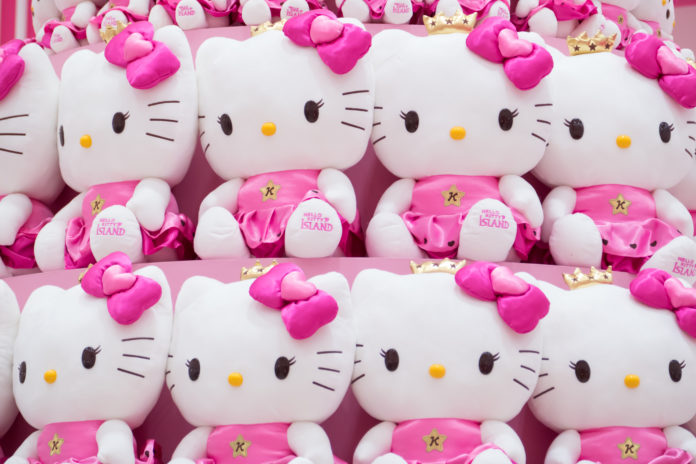
In a gesture reminiscent of the same gift-giving spirit characterised by his popular Hello Kitty creation, 92-year-old Shintaro Tsuji ceded his leadership of Sanrio, the Tokyo-based company he founded just over 60 years ago to his grandson, Tomokuni Tsuji on July 1st, 2020. But if the succession plan of the famously affable bureaucrat turned entrepreneur appears emblematic of the friendship-forward brand he built, the timing of the handover may be equally symbolic.
Sanrio has recently struggled to find international growth in an increasingly crowded cartoon franchise space. Counterfeit knockoffs of their products flowing out of Asia have also begun to bite into the company’s bottom line; so much so, that despite its reputation for avoiding conflict, Sanrio made it known that it intended to aggressively defend its copyrights in court beginning in the fall of 2020.
However, it’s the impact of COVID–19 that the company cites as the cause of its current troubles. The pandemic forced Sanrio to temporarily close numerous retail locations and its Hello Kitty Land theme parks in early 2020, significantly contributing to year-end financial results that were over 90 per cent lower than forecast.
Although circumstances appear far from ideal for incoming CEO, Tomokuni Tsuji, they may be historically fitting. For six decades, it has arguably been his grandfather’s unique approach in uncertain times that has defined Sanrio’s business strategy.
Bureaucrat to Businessman
With poverty-stricken postwar Japan as the backdrop, Shintaro Tsuji graduated from university and began working as a bureaucrat for Yamanashi Prefecture. He would remain in his administrative post for 11 years until the admitted romantic and poet felt himself being pulled elsewhere.
Dismayed that the vast majority of his son’s kindergarten classmates hadn’t received gifts on their birthdays, Tsuji decided he would open a gift-giving business. He hoped to promote a culture of nurturing and friendship in a nation still recovering from the bleak years of reconstruction. In August 1960, Tsuji established, Yamanashi Silk Center Co., Ltd., the predecessor to Sanrio.
In a characteristic combination of his bureaucratic experience with what would become his creative future, it was one of Tsuji’s Patent Office connections who inspired him to make gifts out of original designs and characters. Discovering that patents were protected for 15 years, but copyrights were enforced for 50, Tsuji chose to offer clothing, tableware and stationery that featured unique, and “copyrighted” strawberry prints.
Saying Hello to Kitty
During the early 70s, Sanrio hired in-house artists to design their characters. In 1974, based on the results of a worldwide survey to ascertain the most popular animals, Sanrio introduced a rabbit called Honey-chan (chan a reference for cute or loveable in Japanese), a bear called Koro-chan, and a cat named Kitty-chan. Over time, demand for the adorable mouthless cat with a prominent hair-bow grew above the rest, and soon became known as Hello Kitty.
The character would go on to enjoy worldwide popularity with children and adults alike, adorning everything from t-shirts to soy sauce among its over 50,000 merchandise offerings. Today, the Hello Kitty brand ranks second only to Pokemon as the world’s largest retail franchise and generates an average yearly revenue of $8 billion.
Although easily the most successful Sanrio creation, Hello Kitty is far from the only one. Gudetama, Cinnamonroll, My Melody, TuxedoSam and Badtz-Maru are just some of the popular cartoon personalities that inhabit Sanrio’s universe of over 450 characters.
Promoting the Value of Giving From Within
Sanrio’s recent challenges aren’t the only time it has struggled with profitability. The company’s Puroland and Harmonyland Japanese theme parks siphon significantly from its financials and have operated at a net loss since opening in 1990 and 1991 respectively. Yet for Tsuji, closing the parks that promote his company’s characters, culture and values has always been a non-starter.
That same philosophy of giving, friendship and fun also applies to Tsuji’s employees who share in the company’s profits. Sanrio has publicly traded on Japan’s Topix share index since 1983, but Tsuji has always stated that his employees are the shareholders that matter most.
Tragic Developments
In 2013, Shintaro Tsuji’s son, and heir-apparent, died of acute cardiac failure while on a business trip to Los Angeles. Kunihiko Tsuji was 61, and in his role as Sanrio’s Executive Vice President, had been credited for the surge in the company’s international growth during much of the 2000s.
One year after his son’s death, Shintaro Tsuji steered his company in a different direction, shifting away from the brand licensing strategy that had helped deliver decades of profit, to an approach intended to expand its core business by growing retail sales in its own locations. The move precipitated Sanrio’s largest stock drop in 19 years and set off a steady decline in annual returns that continues to beleaguer the company.
A Critical Moment
At 31, incoming president Tomokuni Tsuji will be the youngest CEO among the publicly traded firms in the Topix index, and even younger than his company’s famous 46-year-old feline. He has stated that he wants to transform Sanrio to better respond to today’s rapidly changing business environment. In the wake of an upending global pandemic, promoting the values of friendship, caring and sharing exemplified by his grandfather and the adorable kitten character he created, could be exactly what the world needs.









